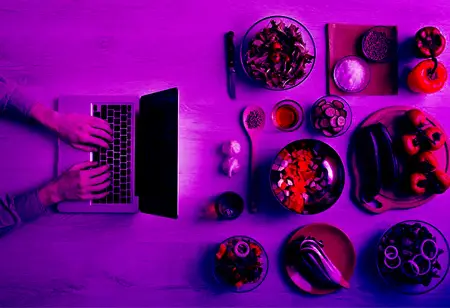Thank you for Subscribing to Food Business Review Weekly Brief
- Home
- Topics
- Alternative Proteins and Plant Based Food
- Beer and Wine
- Canned Beverages
- Coffee And Tea
- Food and Beverage Consulting
- Food and Beverage Financial Service
- Food And Beverages Marketing
- Food Distributors
- Food Ingredients
- Food Sustainability
- Plant Based Food and Beverages
- Seafood Suppliers
- Supplement Manufacturing
- Wine Investment
- News
- Vendor Viewpoint
- CXO Insights
- Conferences
- Newsletter
- CXO Awards
-
Utilization of UV Sterilization in the Food and Beverage Industry
Microorganisms cause most food loss in the current food and beverage industry.

By
Food Business Review | Tuesday, January 04, 2022
Stay ahead of the industry with exclusive feature stories on the top companies, expert insights and the latest news delivered straight to your inbox. Subscribe today.

While UV radiation has its disadvantages, new technical developments have enhanced its usage in food sterilization. This is likely to rise soon as manufacturers fight to be the safest and cleanest.
FREMONT, CA: Microorganisms cause most food loss in the current food and beverage industry.
Still, pathogenic microorganisms induce food spoilage and contamination due to their growth and activity. This type of damage charges the food and beverage industry money, harms its reputation and may result in legal action.
However, why are most food corporations incapable of developing a solution?
Following stringent food safety and quality rules, like those promulgated by the United States Food and Drug Administration (FDA) and the FDA Food Safety Modernization Act (FSMA), is almost certainly an expensive and time-consuming endeavor.
Five steps comprise the FSMA safety plan:
• Analyzes danger
• Preventative measures
• Control of preventive measures
• Supply chain management program
• Recall strategy
Still, ultraviolet (UV) sterilization has developed into one of the safest and most cost-effective methods of eliminating germs like bacteria and mold. While UV sterilization has found applications in different industries, this essay will concentrate only on the food and beverage business.
The UV (ultraviolet) sterilization in the food business relates to ultraviolet energy to enhance food safety and shelf life by delaying microbial development and avoiding pathogenic microbe activity. It's also known as Food irradiation is, and still, sterilization includes no radiation to its subjects.
The utilization of UV rays in the food and beverage industry
Even though UV rays are an effective technique for demolishing bacteria, it is not recommended to irradiate food produce or finished products directly since this might affect discoloration and the formation of off-flavors. Therefore, UV sterilization applications in the food and beverage industry are classified into the following categories:
Surface disinfection involves sterilizing all surfaces that come in contact with food goods. This involves containers, wrappers, bottle tops, and conveyor belts. This application uses UV light to disinfect conveyor belts by utilizing a waterproof module that assures the belt is open to UV light.
The GUV radiation deactivates bacteria on the conveyor belt's surface. This treatment has dramatically saved water and energy expenditures by eliminating the requirement for many thorough washdowns during processing.
Numerous other applications fall within this category. One application is the dairy sector, which sterilizes packing materials for fresh milk products like yogurt.
Air disinfection: UV radiation is also advantageous for sterilizing the food preparation area. Most food and beverage manufacturers utilize a system for sensitive foodstuffs that unites a filter barrier that obstructs air from reaching food products and UV radiation, killing any remaining microorganisms.
UV rays also have demand in the fruit and vegetable industry. For example, UV-treated air is often blown through the peeling unit to provide high-quality mechanically peeled fruits & vegetables.
Liquids disinfection: This is the most frequently used UV sterilization application. UVC rays are frequently applied in water treatment plants to kill various bacteria. Similarly, mixing UVC with ozone results in considerable water oxidation, reducing its organic content dramatically.






